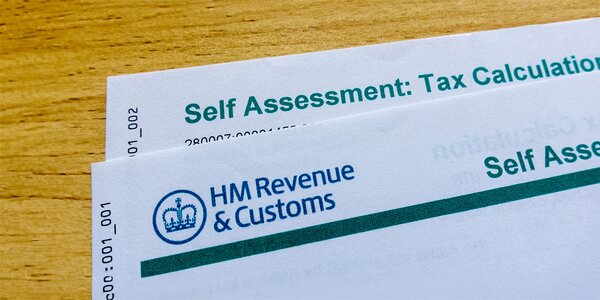
How Do I Register as Self Employed with HMRC?
If you have recently joined the ranks of the self-employed, you will need to register as such with His Majesty's Revenue & Customs (HMRC). Fortunately, registration is a straightforward process that only needs to be done once and covers both your income tax and National Insurance obligations.
Is Registering as Self-Employed Right for You?
Before you go through the process of registering as self-employed, you should think long and hard about whether it is the right thing for you. A lot of people get caught up in the romantic notion of being their own boss only to discover that self-employment is not exactly what they hoped or wanted it to be. But that is not to say that self-employment is all doom and gloom. Not at all. There are some definite upsides to working for yourself.
Let’s take a look at the advantages and disadvantages of self-employment.
Advantages of Self-Employment
- Independence: When it comes to self-employment, the siren song of independence is a powerful lure for many people. And rightfully so. There is something to be said for setting your own hours and not having a boss looming over your shoulder all day.
- The end of commuting: Self-employed people often need to travel to meet with clients and such, but most no longer have to engage in a protracted, expensive, stressful commute every day.
- Be your own boss: When you work for yourself you make all the important calls. You can no longer say the people who run the company aren’t listening to you or don’t respect your opinion because you’re the one running the show.
- Personal satisfaction: There is nothing quite as satisfying as reaping the rewards of your own hard work. Best of all, because it’s your vision, you have a chance to do exactly the kind of work you’ve always wanted to do.
- Invaluable experience: People who work for themselves invariably pick up a lot of useful skills. They have to, because they’re responsible for everything.
- Better pay: The potential financial upside to working for yourself is almost always greater than working for someone else. Although it must be said that how much you make ultimately depends on your commitment and your ability to see things through.
The Disadvantages of Self-Employment
- Isolation: Unless you are a self-employed tradesman that hops from busy jobsite to busy jobsite, you may find self-employment to be isolating. If your work entails long hours on the computer every day you may have precious few encounters with anyone else.
- No benefits package: If you work for yourself and get sick you’ll be losing money for every day you spend in bed recuperating. You also won’t enjoy the nearly 6 weeks of paid holiday leave the average UK worker is entitled to.
- Long hours: If you work for yourself and there is something that needs to get done, you can’t just push back from the desk and go home because it’s 5 o’clock. You have to stay focused and get it done. As such, while self-employment allows you to set your own schedule, the workload is often the real arbiter of when you start and when you stop.
- Mistakes can be costly: If you work for a large company, mistakes can often be glossed over. When you work for yourself, even a simple mistake may cost you an important client.
- Unpredictable income: For the self-employed, the potential financial upside is significant. At the same time, however, getting from the starting line to financial nirvana is typically a long and winding road that includes both good years and bad years.
About Self-Employment Registration
If you have weighed the pros and cons of self-employment and decided to take the plunge, congratulations! Your next step should be registering as a self-employed person with HMRC. Here is how you go about it.
Before attempting to register make sure you have all the information you are going to need at your disposal. That means:
- Your full name
- Your National Insurance number
- Your current address
- A valid phone number
- Your Date of Birth (DOB)
- The name of your business and a brief description (if applicable)
- The date you began self-employment
- Your Unique Taxpayer Reference (UTR) if indeed you already have one
Once you are sure you have all the information you need proceed to the official HMRC website and follow these steps:
- Go to www.gov.uk/log-in-file-self-assessment-tax-return.
- If you don’t have one yet set up a government gateway account so you can access HMRC services.
- Once you have created the government gateway account, log into it.
- Once logged in select the option to register for self-assessment.
- Follow the prompts until you have completed the registration process.
Once the registration process is complete HMRC will send you a letter that contains your Unique Taxpayer Reference along with instructions regarding how to file a self-assessment. It’s in your interest to keep this information in a safe convenient place so that you can reference it when necessary.
You can file your self assessment using a paper form if you wish, in which case your self assessment will be due no later than midnight on October 31st. Should you choose to file your self assessment online the deadline for submission is three months later on January 31st.
The High Cost of Not Registering as Self-Employed
If you qualify as a self-employed person in the eyes of HMRC yet you fail to register as self-employed, you run the risk of incurring the wrath of the government in the form of:
- Penalties for registering late or failing to register at all.
- Penalties for failing to submit a self-assessment.
- Inaccurate tax assessments by HMRC based on incomplete information.
- Being ineligible for certain tax benefits and deductions available to the self-employed.
- Potential legal action initiated against you by HMRC.
Financial penalties typically increase the longer you work for yourself without registering with HMRC.
Conclusion
If you decide to go to work for yourself, you will be required to register as self-employed with HMRC. Fortunately, the process is simple and straightforward and will enable you to get your new business off on the right foot.
Want to track your tax status more closely? Why not use Pie – the easy-to-use personal tax management app. Learn more about our pricing and 60-day free trial here: https://www.pie.tax/pricing.










